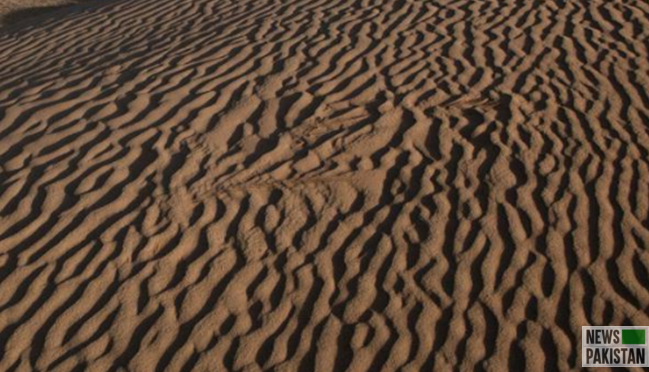ISLAMABAD: The Inter-governmental Panel on Climate Change (IPCC) launched Special Report on Climate Change and Land where it warned serious risks to native biodiversity and desertification as a serious problem for Pakistan due to climate change.
The report termed that the spread of invasive plants can be exacerbated by climate change. In general, it was expected that the distribution of invasive plant species with high tolerance to drought or high temperatures might increase under most climate change scenarios.
“Invasive plants are considered a major risk to native biodiversity and can disturb the nutrient dynamics and water balance in affected ecosystems. Compared to more humid regions, the number of species that succeed in invading dryland areas is low, yet they have a considerable impact on biodiversity and ecosystem services,” the IPCC special report said.
Moreover, it noted that human activities in dryland areas were responsible for creating new invasion opportunities.” Current drivers of species introductions include expanding global trade and travel, land degradation and changes in climate. For example, it suggests that high rainfall variability promotes the success of alien plant species – as reported for semi-arid grasslands and Mediterranean-type ecosystems.”
The researchers in this report had demonstrated that many invasive species could withstand elevated temperature and moisture scarcity caused by climate change. Dukes in the report observed that the invasive plant yellow-star thistle (Centaurea solstitialis) grew six times larger under elevated atmospheric carbon dioxide (CO2) expected in future climate change scenarios.
The alien plants, the report mentioned, invading local vegetation in Pakistan include Brossentia papyrifera (found in Islamabad Capital territory), Parthenium hysterophorus (found in Punjab and Khyber Pakhtunkhwa provinces), Prosopis juliflora (found all over Pakistan), Eucalyptus camaldulensis (found in Punjab and Sindh provinces), Salvinia (aquatic plant widely distributed in water bodies in Sindh), Cannabis sativa (found in Islamabad Capital Territory), Lantana camara and Xanthium strumarium (found in upper Punjab and Khyber Pakhtunkhwa provinces). Most of these plants were introduced by the Forest Department decades ago for filling the gap between demand and supply of timber, fuelwood and fodder. These non-native plants have some uses but their disadvantages outweigh their benefits, the report underscored.
“Besides being a source of biological pollution and a threat to biodiversity and habitat loss, the alien plants reduce the land value and cause huge losses to agricultural communities. Brossentia papyrifera, commonly known as Paper Mulberry, is the root cause of inhalant pollen allergy for the residents of lush green Islamabad during spring. From February to April, the pollen allergy is at its peak with symptoms of severe persistent coughing with difficulty in breathing and wheezing. The pollen count, although variable at different times and days, can be as high as 55,000m-3. Early symptoms of the allergy include sneezing, itching in the eyes and skin, and blocked nose. With changing climate, the onset of disease is getting earlier, and pollen count is estimated to cross 55,000 m-3.”
About 45 per cent of allergic patients in the twin cities of Islamabad and Rawalpindi showed positive sensitivity to the pollens. However, millions of rupees had been spent by the Capital Development Authority on pruning and cutting of Paper Mulberry trees but because of its regeneration capacity growth was regained rapidly, the report said.
Among other invading plants, Prosopis juliflora (Kabuli Kekar- Kabul Acacia) has allelopathic properties, and Eucalyptus was known to transpire huge amounts of water and deplete the soil of its nutrient elements, it added.
The report noted that although Biodiversity Action Plan exists in Pakistan, it was not implemented in letter and spirit. The Quarantine Department focused only on pests and pathogens but took no notice of plant and animal species being imported.
“Also, there is no provision of checking the possible impacts of imported species on the environment and of carrying out bio assays of active allelopathic compounds of alien plants,” it added.
The report further found that parts of South Asia experienced drying over the last three decades.
“More than 75 per cent of the area of northern, western and southern Afghanistan is affected by overgrazing and deforestation.”
Desertification is a serious problem in Pakistan with a wide range of human and natural causes where it had similarly affected parts of India.
Using satellite data to map various desertification processes, the report had identified 81.4 million hectares (M ha) were subject to various processes of desertification in India in 2005, while salinisation affected 38 6.73 M ha in the country.
app











